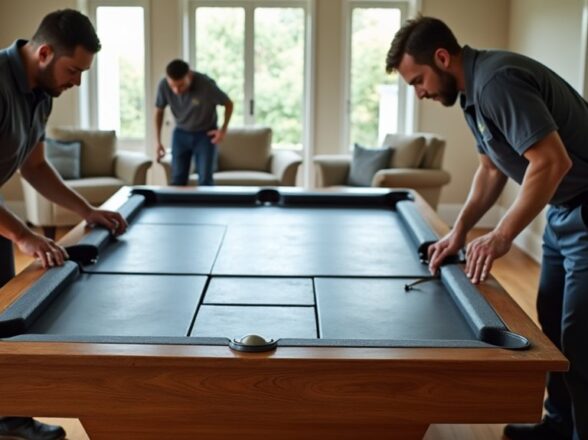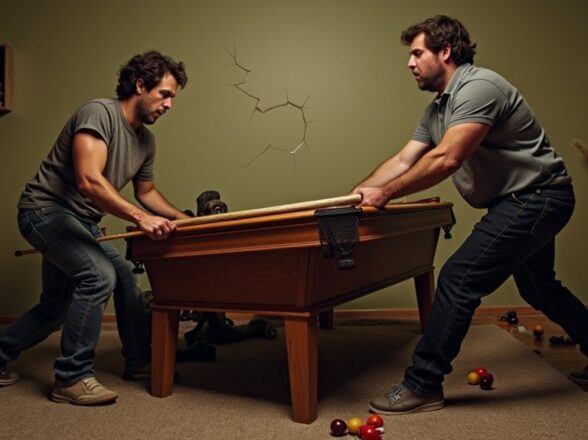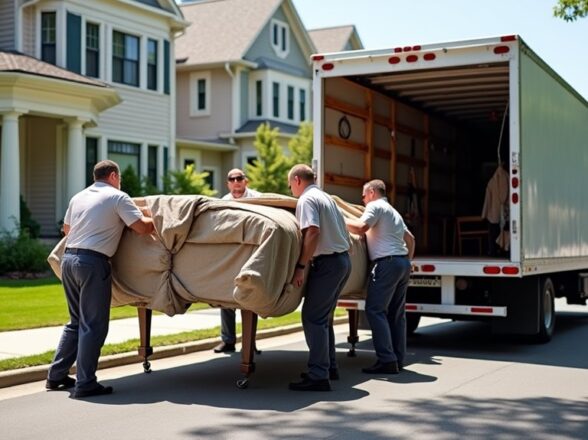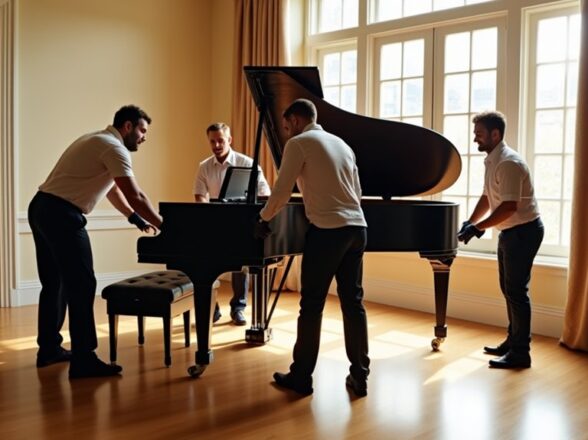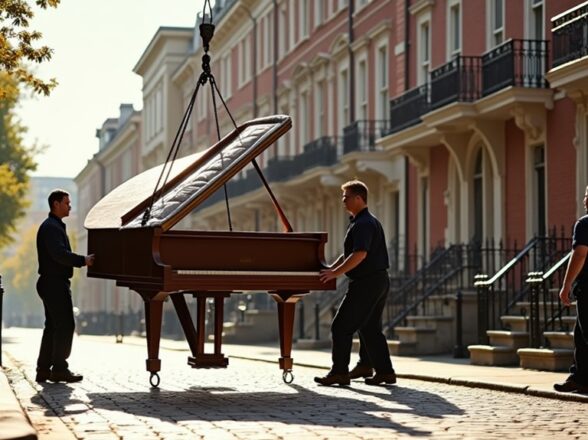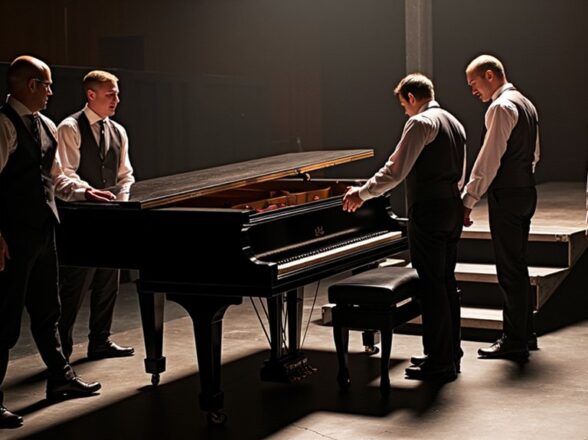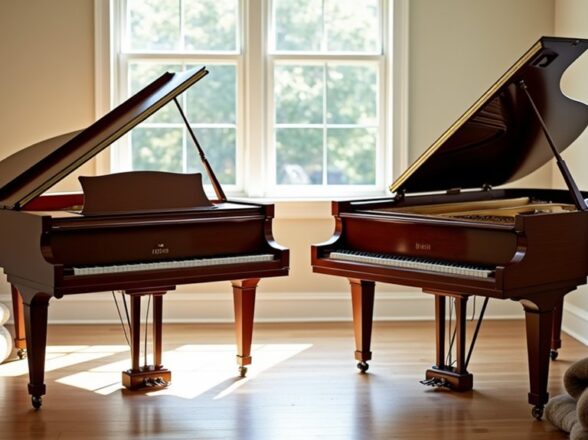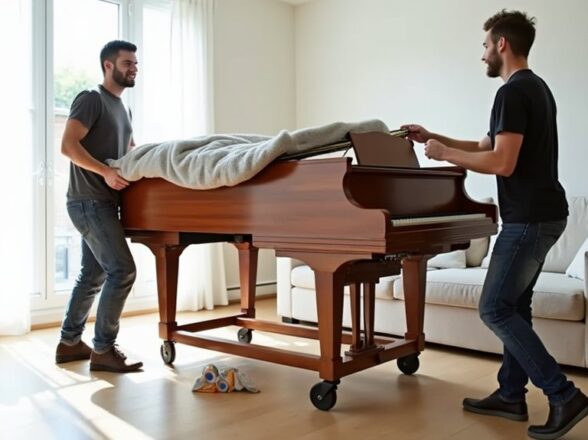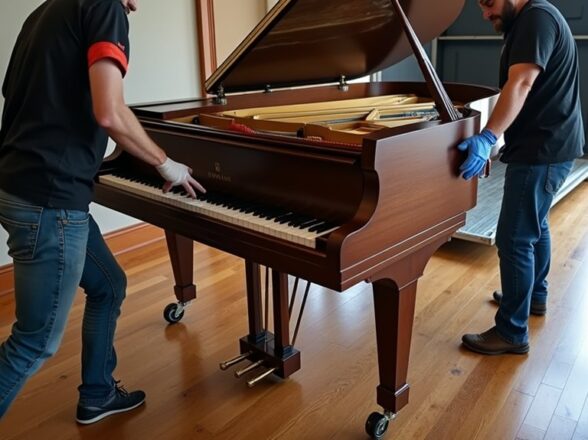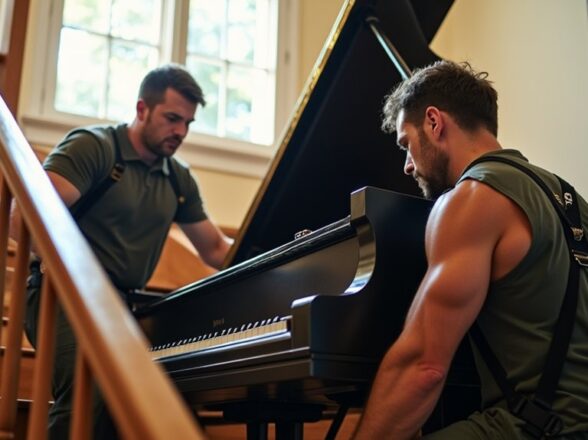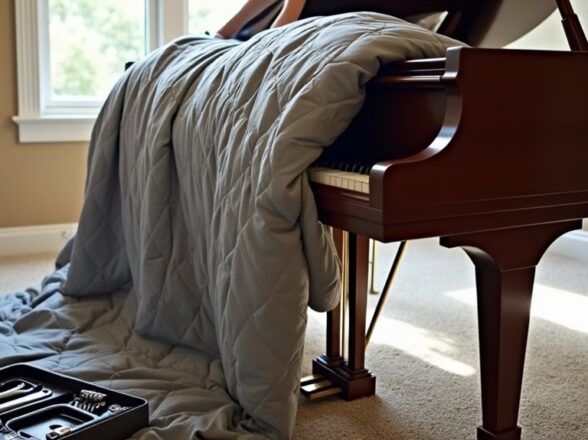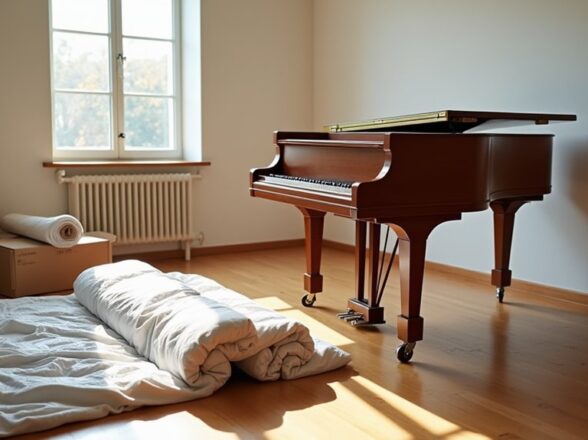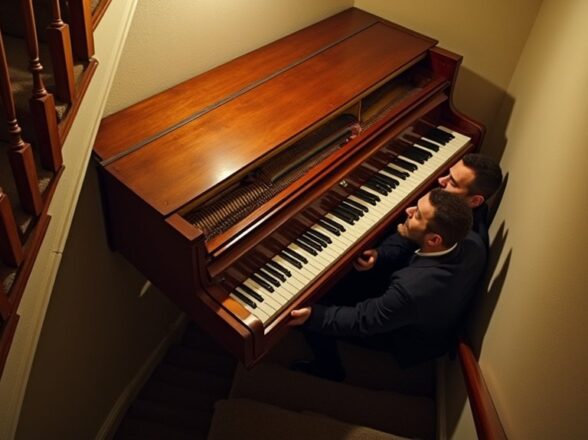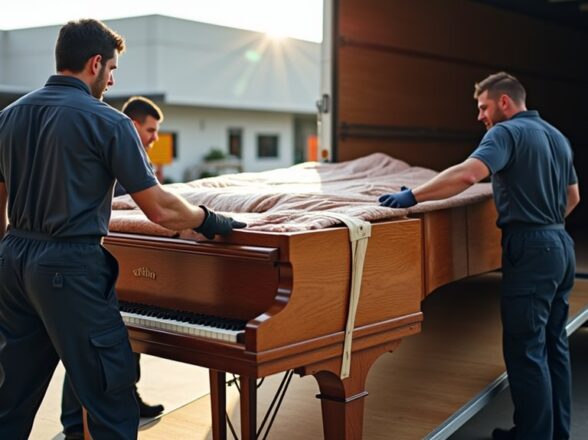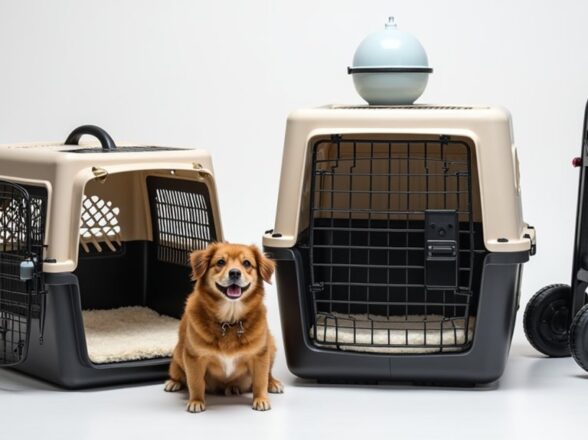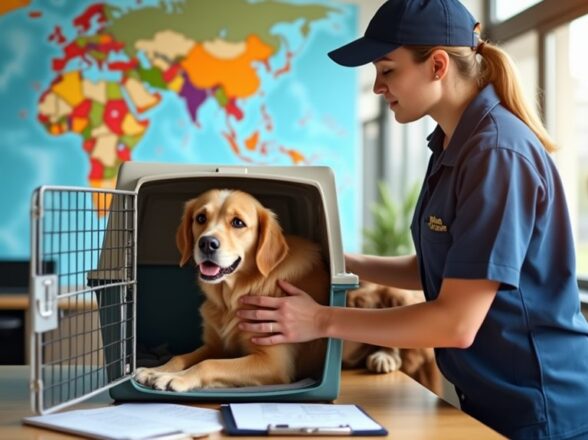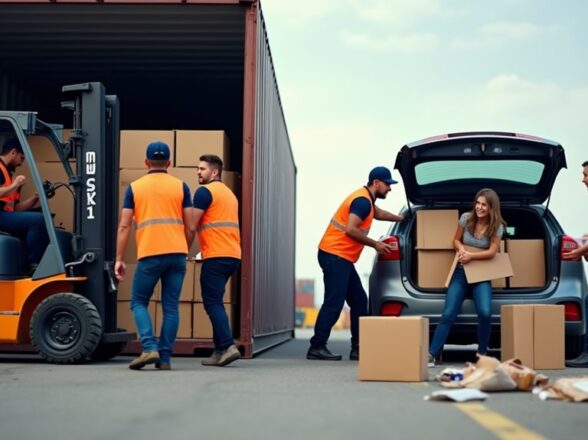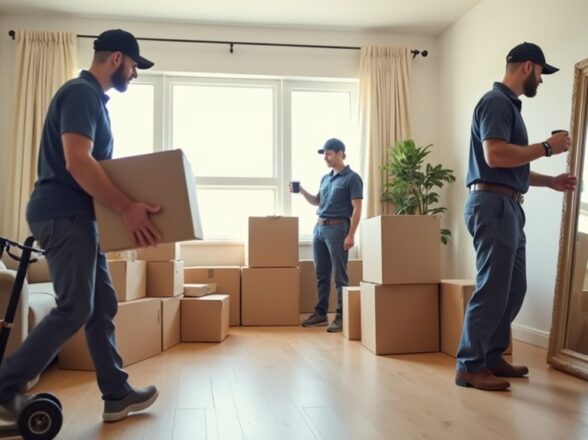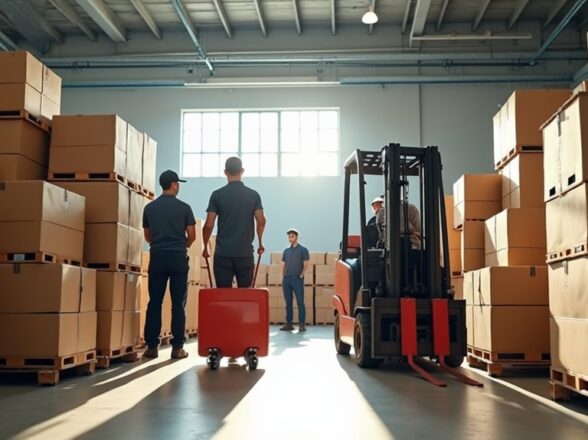What Types of Pianos Can Professional Movers Handle? A Guide to Grand, Upright, Digital & More
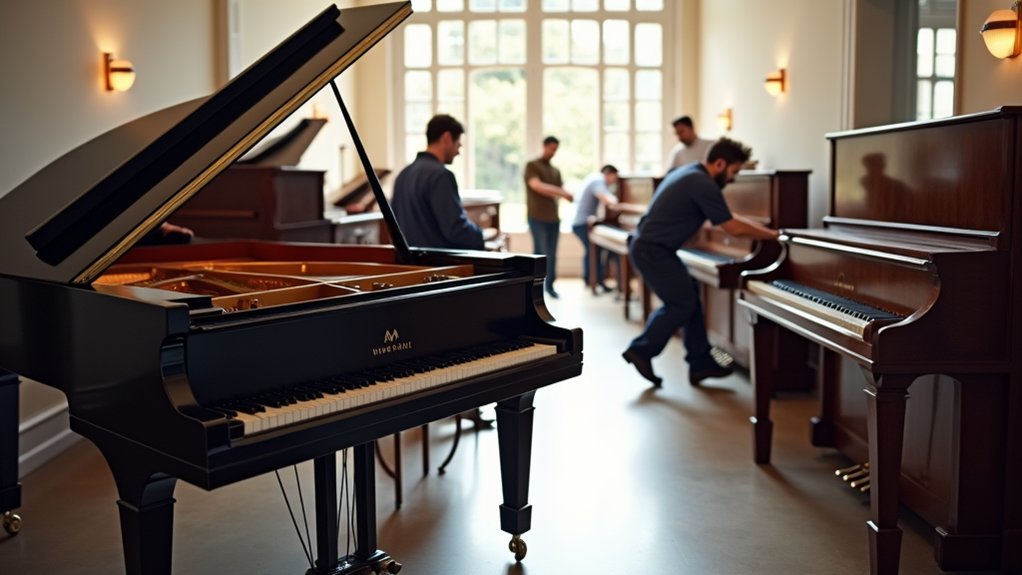
Professional movers can handle various types of pianos, including grand, upright, digital, console, and specialty models. Grand pianos are heavy and require specialized tools for transport. Upright pianos are compact but still need careful handling. Digital pianos are lighter but sensitive to impacts. Console pianos offer quality sound in a smaller frame, while player pianos have mechanisms for automatic playback. Specialty pianos, like harpsichords, need expert care due to their delicate components. Each type demands unique moving strategies to guarantee safe transport. Understanding these differences will help you choose the right service for a smooth move.
Key Takeaways
- Professional movers can handle grand pianos, which require specialized tools and techniques due to their heavy weight and delicate components.
- Upright pianos are common for movers, as their compact design allows for easier transportation while still needing careful handling.
- Digital pianos are lightweight and easier to move, but require attention to their sensitive keys and built-in electronics during transit.
- Console pianos, being budget-friendly and compact, are also manageable for movers, ensuring they are transported safely with proper equipment.
- Specialty pianos, like harpsichords and clavichords, need professional movers skilled in handling delicate structures to prevent damage during relocation.
Overview of Piano Types

When you're considering the different types of pianos, it's essential to understand how each one can impact your move. Upright pianos are popular for their compact size, making them easier to transport. However, their weight can still pose challenges. Digital pianos offer a lighter alternative, requiring less maintenance and no tuning, which simplifies the moving process. Grand pianos, while stunning, demand special handling due to their size and complexity. Each type has its own history, influencing how they're built and maintained. Understanding piano maintenance is key, as neglecting it can lead to difficulties during a move. By knowing the differences among piano types, you can better prepare for a smooth relocation experience.
Grand Pianos
When it comes to moving grand pianos, size and weight are vital factors to take into account. These instruments can weigh anywhere from 500 to 1,200 pounds, making them challenging to transport without the right equipment. Using specialized moving tools not only guarantees their safety but also makes the process more efficient for you. Professional movers employ high-quality padding and packing materials to protect these valuable instruments during transit.
Size and Weight Considerations
Grand pianos often weigh between 500 and 1,200 pounds, making them one of the heaviest instruments to move. Their significant size and weight present unique challenges. You need to take into account weight distribution to avoid damage during transport. Additionally, size limitations can restrict access in certain locations, complicating the moving process. Here are some key factors to keep in mind:
- Dimensions: Grand pianos can reach lengths of up to 10 feet, requiring ample space.
- Weight: Their heavy construction means you'll need more than just a couple of people to lift them.
- Access: Narrow hallways and stairs may limit your moving options.
Professional movers, like those at Upsleeve Movers and Packers, employ specialized equipment and expertise to safely transport grand pianos, ensuring minimal risk of damage during transit.
Understanding these factors will help guarantee a smoother moving experience for your grand piano.
Specialized Moving Equipment
Moving a grand piano requires not just muscle but also the right tools. You'll need specialized moving equipment designed specifically for this delicate task. Heavy-duty dollies are vital for safely transporting the piano without damaging it or the floors. You should also consider using piano boards, which help distribute the weight evenly and protect the instrument. Straps are essential for securing the piano during transport, preventing it from shifting or falling. Additionally, ramps can make loading and unloading easier, especially in tight spaces. Using these specialized tools guarantees that your grand piano arrives at its new location safely. Investing in the right moving equipment makes a significant difference when handling such valuable and heavy instruments. Professional movers often provide customized moving plans that cater to specific needs, ensuring a smooth and efficient relocation process.
Upright Pianos
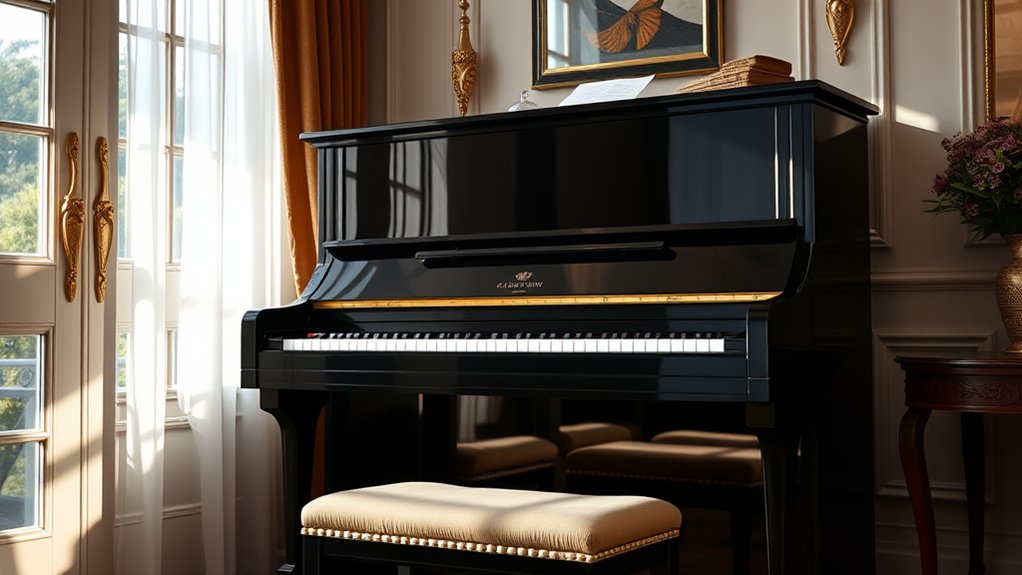
Upright pianos are popular choices for both beginners and seasoned musicians, thanks to their compact design and rich sound. When moving an upright piano, it's important to prioritize its safety and condition. Professional movers are well-equipped to handle the challenges of transporting these instruments. Here are some key points to keep in mind:
- Upright piano care: Regular tuning and adjustments help maintain sound quality.
- Upright piano maintenance: Keep it in a stable environment to prevent damage from humidity or temperature changes.
- Professional moving services: They use specialized equipment and techniques to guarantee a safe move.
- Professional movers offer specialized transportation options, including secure handling and transport of pianos to ensure they arrive in perfect condition.
Digital Pianos
When it comes to digital pianos, understanding their features is essential for a smooth move. Many models are lightweight, making them easier to transport compared to traditional pianos. Knowing how to handle these instruments will help guarantee they arrive safely at their new location.
Handling Digital Piano Features
Digital pianos come equipped with a variety of features that enhance both playability and sound quality, making them popular among musicians. When moving digital pianos, it's crucial to understand these digital piano features for safe handling:
- Weighted keys: These simulate the feel of an acoustic piano and require careful transport to avoid damage.
- Built-in speakers: Make certain they're protected during moving, as they can be sensitive to impacts.
- Connectivity options: Many digital pianos have USB or MIDI ports that should be handled with care to prevent bending or breaking.
Transporting Lightweight Models
Although lightweight models of digital pianos are easier to transport, you still need to take care to guarantee they arrive at their destination safely. Since these pianos are made from lightweight materials, they can be more vulnerable during transport. Use proper transport techniques to protect them. Start by removing any detachable parts, like stands or pedals, and packing them separately. Use padded cases or blankets for added protection. When lifting the piano, make certain you have a solid grip and consider using a dolly or cart to move it more easily. Secure the piano in your vehicle to prevent it from shifting during transit. By following these steps, you can help guarantee your digital piano arrives safely and in excellent condition.
Console Pianos
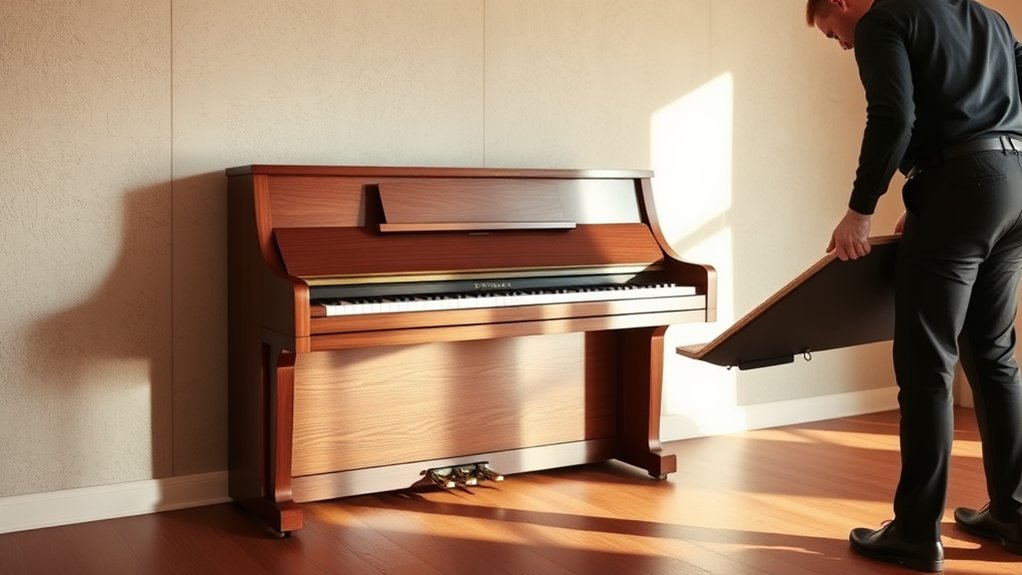
Console pianos offer a perfect blend of aesthetic appeal and functionality, making them a popular choice for many musicians. If you're considering moving one, you should know their key features and advantages.
- Compact Size: Console pianos are typically smaller than grand pianos, fitting well in various spaces.
- Built-in Stand: Most models come with a built-in stand, eliminating the need for extra furniture.
- Affordable Options: They're generally more budget-friendly compared to grand pianos.
When it comes to console piano features, they often include weighted keys and a range of sounds. The console piano advantages are significant; they provide quality sound and performance without taking up too much room. With proper care, a professional mover can handle this type of piano seamlessly.
Player Pianos
If you're looking for a unique musical experience, player pianos might be just what you need. These fascinating instruments have a rich player piano history, dating back to the late 19th century. Player pianos use a mechanism to play music automatically, allowing you to enjoy live performances without needing to play yourself. When it comes to player piano maintenance, it's essential to keep the mechanics in good shape for peak performance. Regularly check the rolls and make sure the piano is dust-free. While they can be heavy and complex, professional movers can handle them with care. If you're considering moving a player piano, make certain you hire movers experienced in handling these special instruments to protect their delicate mechanisms.
Baby Grand Pianos
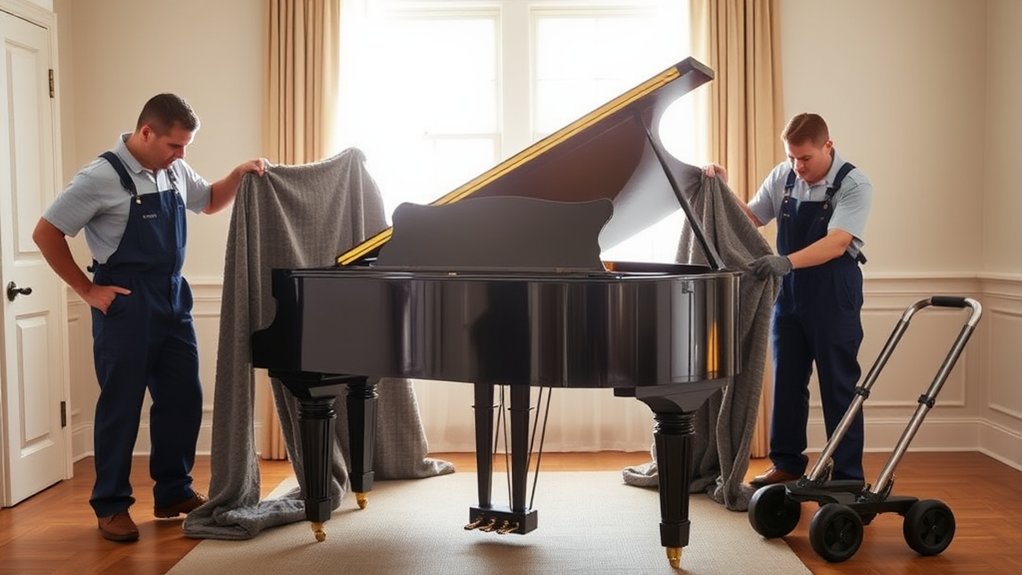
Baby grand pianos are a popular choice for musicians and enthusiasts alike, offering a perfect blend of elegance and sound quality. When considering a baby grand, there are a few important aspects to keep in mind:
- Baby grand maintenance: Regular care is essential to keep your piano in top shape.
- Baby grand tuning: It's recommended to tune your piano at least twice a year to maintain its sound.
- Moving considerations: Professional movers have the expertise to handle the delicate structure of a baby grand piano.
Their size allows them to fit in smaller spaces while still providing rich sound. If you're planning a move, guarantee you hire experienced movers who understand the specific needs of baby grand pianos for a smooth changeover.
Specialty Pianos
While specialty pianos come in various shapes and sizes, they each serve unique purposes and cater to specific musical styles. You might encounter specialty piano types like harpsichords, clavichords, or toy pianos. Each of these instruments has its own design and sound, making them distinct from traditional pianos. Moving these specialty pianos can present unique moving challenges due to their delicate components and unconventional structures. For instance, harpsichords often have multiple strings and intricate designs that require careful handling. Likewise, toy pianos are small but can be easily damaged if not packed properly. It's crucial to use professional movers who understand how to navigate these challenges. They'll guarantee your specialty piano arrives safely at its new location.
Frequently Asked Questions
How Much Do Professional Movers Charge for Piano Moving Services?
When you hire professional movers, moving costs for pianos vary based on piano types. Typically, expect to pay between $150 and $500, with grand pianos often costing more due to their size and complexity.
What Precautions Should I Take Before Moving My Piano?
Before moving your piano, guarantee it's properly prepared. Secure loose parts, cover it with blankets, and clear pathways. These moving tips help prevent damage and make the process smoother for you and the movers.
Can I Move a Piano Myself?
About 95% of piano owners opt for professional movers due to the risks involved. If you attempt piano moving yourself, guarantee safe transport by using proper equipment and enlisting help to avoid injuries or damage.
How Long Does It Take to Move a Piano?
Moving a piano typically takes a few hours, depending on the type. A professional mover's efficiency can greatly reduce piano moving duration, ensuring a smooth transport while minimizing risks to your instrument and property.
What Insurance Options Are Available for Moving a Piano?
When moving your piano, don't worry about potential damages. You've got options like piano insurance and moving coverage, which protect your investment during transit. Discuss these with your movers for peace of mind.
Conclusion
Ultimately, professional movers can handle a variety of pianos, from grand to digital models. Each type has its own unique challenges and requirements for safe transport. Understanding the specifics of your piano can help you choose the right movers for the job. Whether it's a delicate baby grand or a sturdy upright, knowing what to expect guarantees a smoother moving process. Always communicate with your movers about your piano's needs to ensure its safe arrival at your new location.
Related posts
Recent posts
Post Categories
Tags
Subscribe

